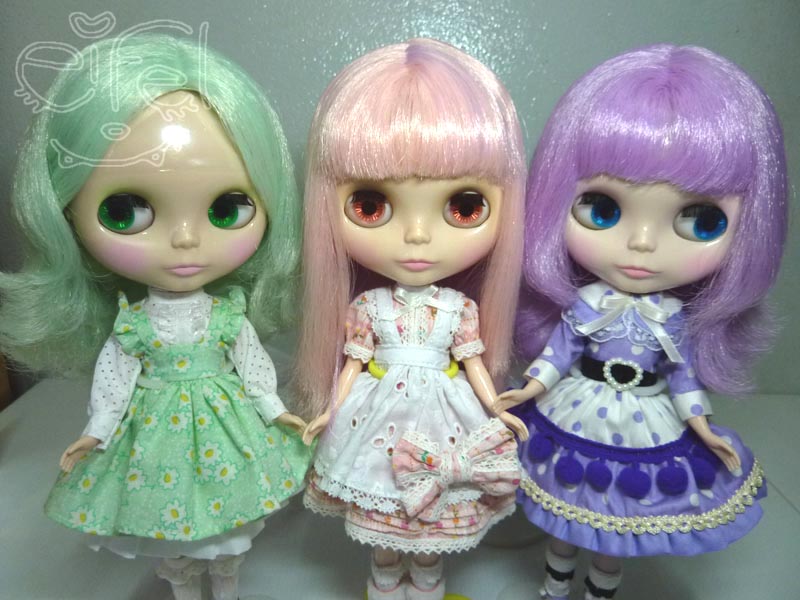The Blythe doll, with its distinct oversized eyes and unique sense of style, has become a cherished collectible among doll enthusiasts, fashion lovers, and artists alike. Originally introduced in the 1970s and later revived in the early 2000s, the Blythe doll has since captured the imagination of people around the world. This article explores the history, appeal, and cultural impact of the it, delving into why it continues to hold such a special place in the hearts of collectors and creatives.
The Origins of the Blythe Doll
The story of the Blythe doll begins in 1972 when the toy was created by designer Allison Katzman and produced by the American toy company Kenner. At first, the doll was seen as a product that would appeal to young girls due to its striking, surreal appearance, characterized by its large, color-changing eyes. However, when it was released, the Blythe doll was met with mixed reactions. It was considered too unusual and avant-garde for its time, and the initial production run was unsuccessful. After only one year of production, Kenner discontinued the it, and it faded into obscurity.
Despite its short-lived commercial failure, the Blythe doll would experience an unexpected resurgence. In the early 2000s, a Japanese company called Takara revived the doll, capitalizing on the growing interest in vintage toys and the trend of “kawaii” culture in Japan. This revival was sparked by the efforts of photographer Gina Garan, who had discovered the original Blythe dolls while traveling. She began taking photographs of these dolls and sharing them with others, which helped reignite interest in the collectible. Through Garan’s work and Takara’s re-release of the doll, the it was officially brought back to life and has remained a beloved figure in the world of collectibles and fashion ever since.
The Unique Appeal of the Blythe Doll
What makes the Blythe doll so captivating is its unconventional look and the limitless possibilities for customization. Unlike traditional dolls, Blythe dolls feature a distinctive feature: their eyes, which can be switched between four colors (blue, green, amber, and pink) with the pull of a string located at the back of the doll’s head. This design allows for a variety of different expressions, making the doll seem more alive and dynamic compared to other static dolls.
The Blythe doll’s oversized head, long legs, and exaggerated facial features contribute to its otherworldly charm, giving it a timeless and somewhat ethereal quality. While the design might have been considered strange at first, it is precisely this eccentricity that has attracted so many collectors and artists to the it. Its unique look has made it a blank canvas for creativity, inspiring customization and artistry that transcend the traditional boundaries of doll design.
Customization and Creativity: The Blythe Doll as an Art Form
One of the most captivating aspects of the Blythe doll is its incredible potential for customization. Over the years, collectors have embraced the idea of “customizing” their it by altering the hair, face paint, outfits, and even the doll’s eyes. The world of Blythe doll customization has become a thriving subculture, with skilled artisans creating one-of-a-kind pieces that command significant attention and value.
Customizers, or “Blythe artists,” take great care in transforming dolls into personalized works of art. Some might change the doll’s eye chips, which alter the color and appearance of the eyes, while others will modify the face paint to create unique facial expressions. Hair color and style are often changed, with some artists using premium-quality fibers to craft elaborate wigs that match specific themes, from pastel-colored locks to bold, neon hues.
Many Blythe enthusiasts take the customization process even further, designing elaborate wardrobes for their dolls that reflect different fashion trends and aesthetics. The fashion choices available for Blythe dolls range from chic, contemporary styles to retro-inspired outfits, allowing collectors to express their unique tastes and preferences through their dolls. From the most delicate and intricate dresses to edgy, street-style attire, the it has become an icon of fashion and self-expression.
Blythe Dolls in the World of Fashion
The influence of the Blythe doll has reached beyond the world of toy collecting and art. In recent years, the doll has gained popularity within the fashion industry, where its distinctive look has been embraced by designers, photographers, and models. The doll has made appearances in high-fashion photo shoots, fashion advertisements, and runway shows, cementing its status as a fashion icon.
The Blythe doll’s whimsical and customizable nature makes it a perfect subject for fashion photography. Designers and stylists often use it as part of their creative process, showcasing miniature fashion collections and experimenting with different outfits and accessories. The dolls have been photographed by well-known photographers and even featured in the fashion pages of prominent magazines.
The fashion-forward appeal of Blythe dolls has led to collaborations with popular clothing brands and designers, who release limited-edition outfits and accessories for the dolls. These partnerships have created a niche market where fashion enthusiasts can purchase exclusive designs for their it, further solidifying the connection between the doll and the world of high fashion.
The Blythe Doll Community and Collecting Culture
Blythe dolls have fostered a dedicated and passionate community of collectors and enthusiasts who share a love for the dolls’ unique design and customization potential. These collectors often engage in online forums, social media groups, and even in-person conventions where they can connect with others who share their passion. The world of it collecting is a vibrant subculture, with individuals of all ages participating in the fun and creativity that the dolls inspire.
Collecting Blythe dolls has also become a serious hobby for many, with some rare and vintage dolls fetching high prices on the secondary market. Special editions, limited releases, and custom-painted dolls are often highly sought after, and collectors eagerly hunt for these rare finds at conventions, online marketplaces, and specialized stores. Some collectors even create entire collections of Blythe dolls based on specific themes, such as different color schemes or certain fashion eras.
The Blythe doll’s strong online presence has also contributed to the growth of its fanbase. Platforms like Instagram, Pinterest, and Flickr are filled with stunning photographs of it, often dressed in intricate outfits or posed in whimsical scenes. These online spaces have created a community where collectors and artists can showcase their work, exchange tips and tricks, and celebrate the world of Blythe dolls.
Blythe Dolls in Pop Culture
The Blythe doll has also managed to infiltrate mainstream pop culture, making appearances in films, music videos, and art exhibitions. The doll’s distinctive look, which blends elements of surrealism and nostalgia, has made it an appealing subject for visual storytelling in various forms of media.
One notable example of the Blythe doll’s appearance in pop culture is its role in the 2007 film The Life Aquatic with Steve Zissou, directed by Wes Anderson. The film features a series of it in a prominent role, further solidifying their place in popular culture. Additionally, many musicians and artists have embraced the Blythe doll as a muse, using the dolls in their music videos or incorporating them into their visual art.
The it has become more than just a collectible—it’s a cultural symbol of creativity, individuality, and self-expression. Its presence in the worlds of fashion, art, and pop culture has made it an iconic figure with enduring appeal.
Conclusion: The Timeless Charm of the Blythe Doll
In conclusion, the Blythe doll has come a long way since its initial failure in the 1970s. Today, it stands as a beloved collectible, artistic medium, and fashion icon. Its unique design, customizable features, and connection to the creative world have helped it transcend generations and cultures. Whether it’s the doll’s oversized eyes, its transformative potential, or its ability to inspire creativity, the it continues to captivate the imaginations of collectors, artists, and fashion enthusiasts worldwide. As the Blythe doll continues to evolve, its timeless charm ensures that it will remain a cherished part of the doll-collecting world for many years to come.




